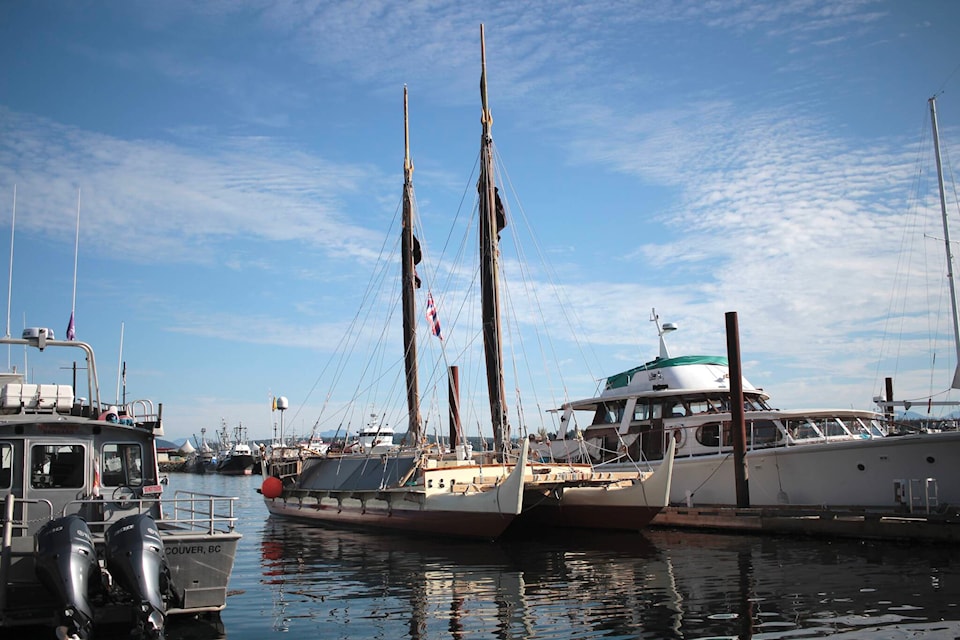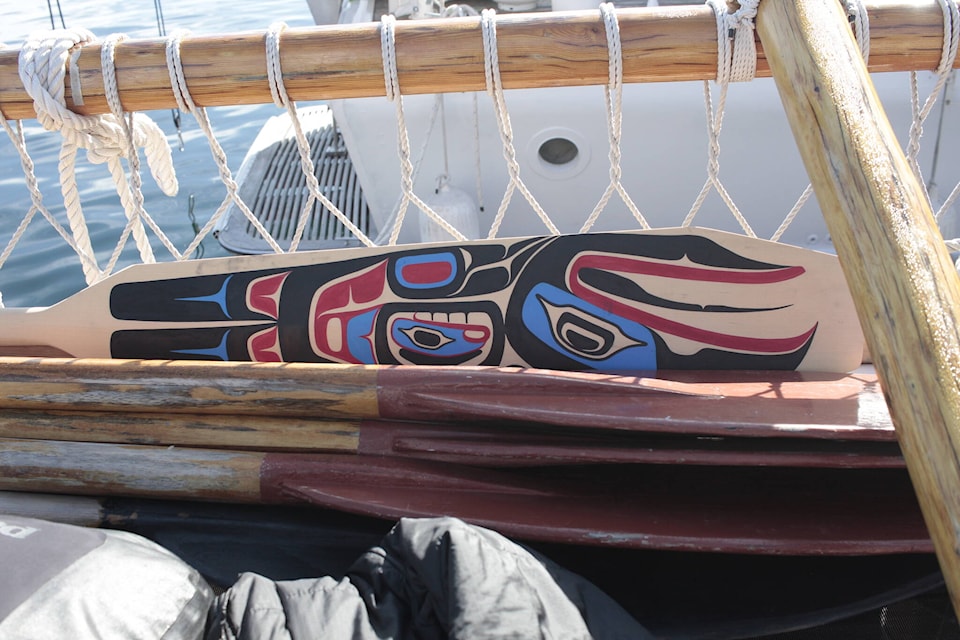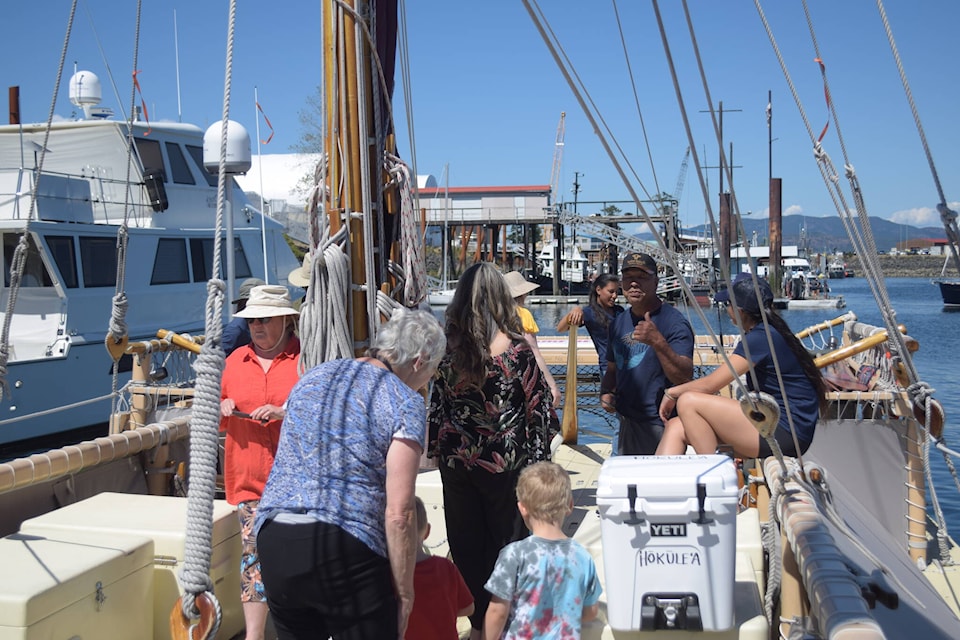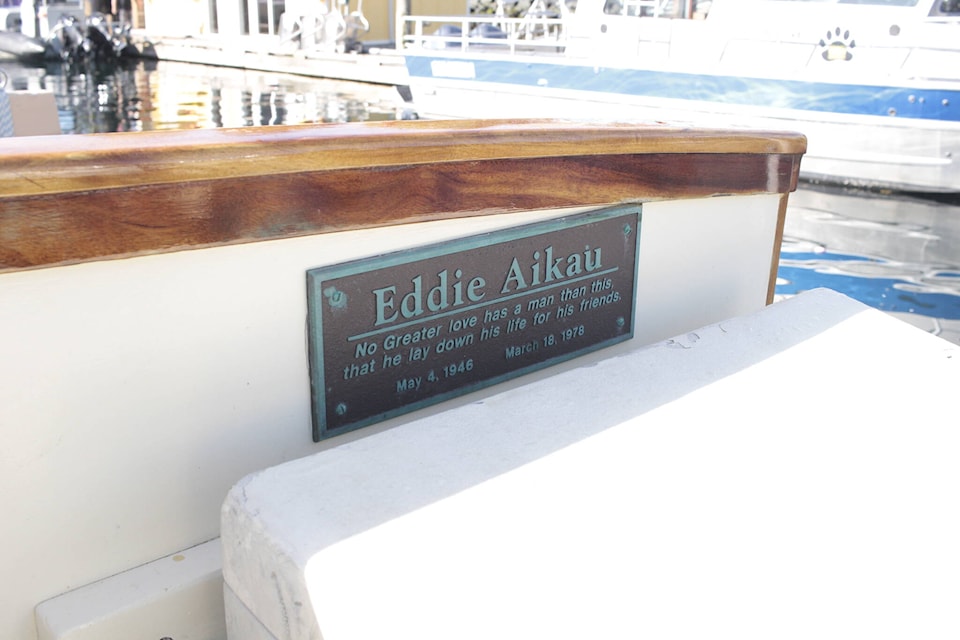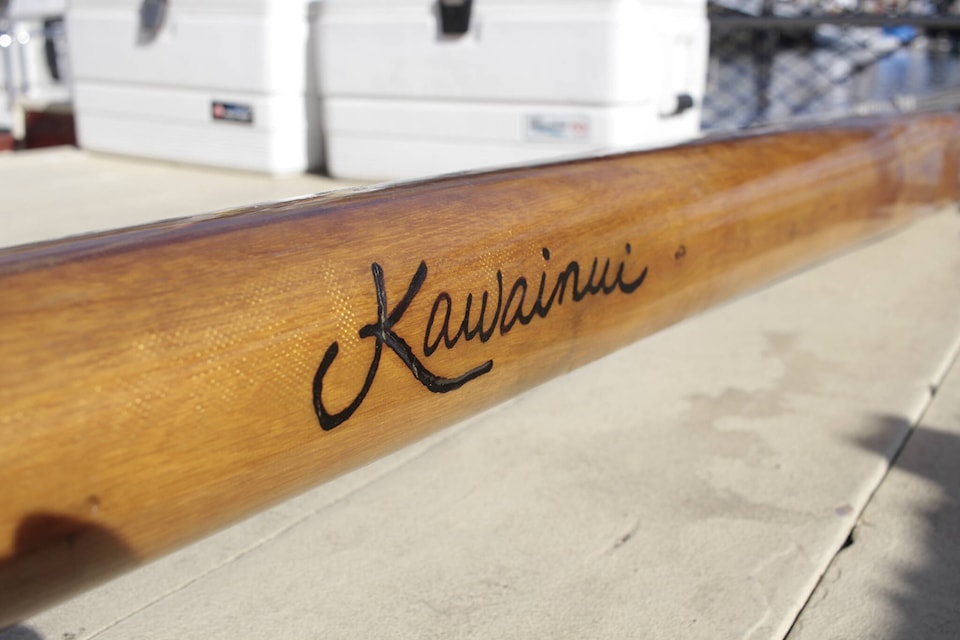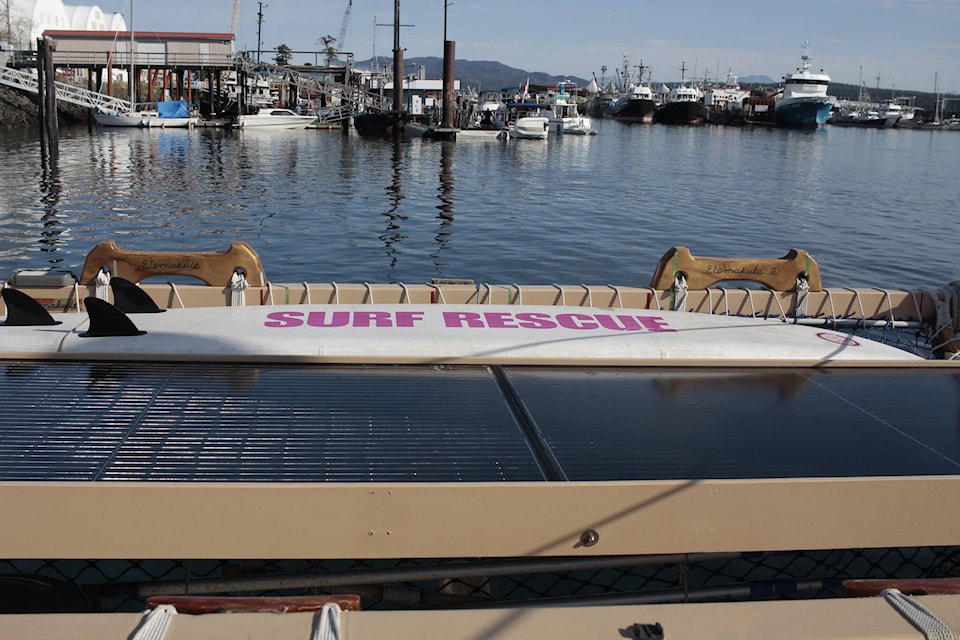For the next four years, Hawaiian Voyaging canoe Hōkūleʻa will be circumnavigating the Pacific Ocean, and Campbell Riverites got a chance to explore it on Aug. 3.
The trip is being described as “A Voyage for Oceans, A Voyage for Earth,” Moananuiākea is the name of the voyage. It also is the name for the vast Pacific Ocean that is a heritage region for Peoples who are Indigenous to the islands and continents that surround the ocean. One of the goals is to “ignite a movement of 10 million ‘planetary navigators’ who will pursue critical and inspiring ‘voyages’ to ensure a better future for the earth.”
Moani Heimuli is the captain of this leg of the voyage. She is the fourth generation of her family to be a traditional navigator.
“We’ve got four generations of them now, which is pretty amazing” Heimuli said. “Coming from Hawai’i, at one point in time. We never had any navigators here. We lost that art … to say today that we have four generations of navigatiors … we’re very, very proud of that.”
That traditional navigation is done without the use of any instruments. Using ancestral methodology re-introduced to Polynesian people by Master Navigator Mau Piailug of Micronesia, navigators are able to travel by using stars, animals, wave direction and winds.
“Once you get away from the land, it’s a lot easier because the horizon becomes your compass,” she said. “The land blocks swells and things like that. They come clean out on the deep sea. It’s really nice.”
Over the course of the next four years, Hōkūleʻa will visit nearly 100 Indigenous territories in 36 different countries and archipelagos. Heimuli said that part of the goal was to build a sense of camaraderie and common heritage between these Nations.
“You know, if you really think about it, we’re the biggest country in the world,” she said. “All these little tiny Islands collectively, if we come together. We are the biggest country in the world. That’s the people of this Pacific Ocean from all the way up in this Pacific Northwest all the way down south to New Zealand.”
The voyage started in Alaska, and will pass by B.C. through September. From there, the crews will continue south along the west coast of North, Central and South America, before they turn west early next year towards the Galapagos Islands and Rapa Nui. It will pass through Polynesia (Pitcairn Islands, Marquesas, Tuamotus) through next spring, and finish the crossing to Aotearoa (New Zealand) where it will travel through spring 2025.
The voyage will cover Melanesia and Micronesia into 2026, and then travel through Asia and up to Russia by September 2026. By the end of 2026 the voyagers will have crossed the Northern Pacific to Los Angeles, and will return to Hawai’i. It will make one final trip in the spring of 2027 to Tahiti.
As they travel, they will stop in ports to change crew members, restock supplies and also to allow for a cultural exchange. There is also a sustainability component. Hōkūleʻa is powered entirely by natural means. There is no motor, no GPS and no other navigational tools. They hope that through the voyage they are able to build a sense of stewardship for the ocean all Pacific peoples share.
“We’re voyaging for the Earth but also voyaging for seven Generations from now,” she said. “So that our kids can continue to eat and thrive in the oceans that we live in now. And it’s also about gathering all these stories from the communities in the First Nations peoples and you know, we’re all connected in some way or form.”
Part of that occurred on Aug. 3, when the crew met with local Indigenous Peoples to “connect with everybody, learn our stories together and share stories.”
“You know, generations from now, they’ll still be talking about us here in Campbell River. Like ‘I remember when that canoe was here, you know? We’re all people of the canoe.”
Hōkūleʻa leaves Campbell River on Friday, when the crew will make their way to Vancouver for a few days, before continuing on to Seattle and eventually the rest of the Pacific.
RELATED: Polynesian vessels to stop in Campbell River en route around Pacific Ocean
